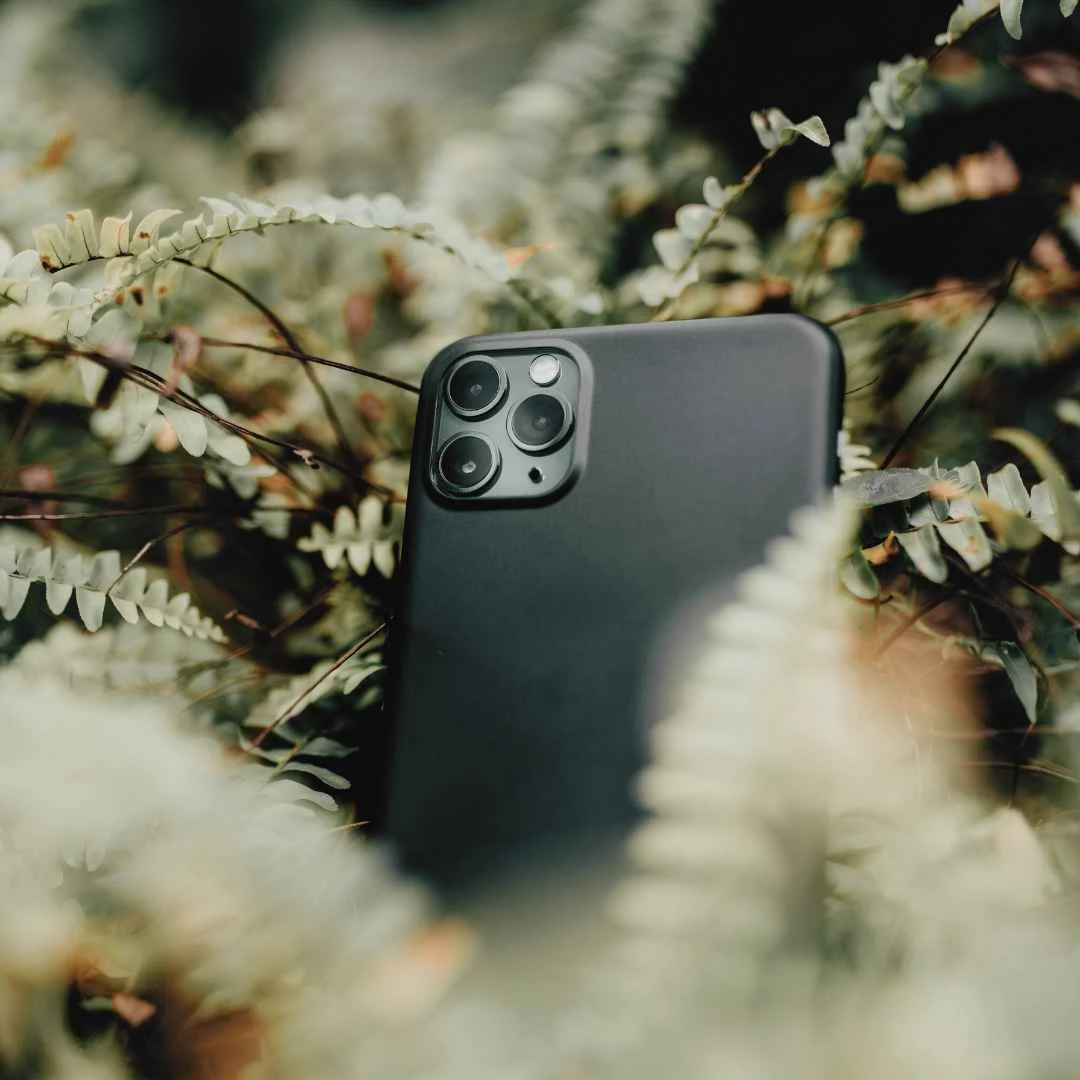Digital Detox for Anxiety Relief
Practical steps to escape hijacked attention and protect your mind from nonstop digital stress.
Reframing the Path, by licensed therapist Melissa Rolfes, is your guide to making the most of your therapeutic journey, helping you feel more confident and effective every step of the way. The information provided here is for educational purposes only, and is not a substitute for professional mental health or medical care, nor does it establish a therapist-client relationship. If you're experiencing distress and feel unable to keep yourself safe, please access these resources.
We live in a world where smart screens are not just tools. They are a form of consumption. Every scroll is a bite of something: bad news, outrage, comparison, or distraction. Like any diet that is heavy on junk, the long-term effects on our mental health are hard to ignore.
It is no accident that pulling away feels uncomfortable. These devices are designed to keep us hooked, hijacking our attention and, in many ways, our brainstems. Steve Jobs did not even let his own kids use smart screens. He knew exactly how addictive they were. Over time, constant pings and endless feeds rewire our brains for nonstop input, making stillness and focus feel foreign.
If you have been riding the scrollercoaster, that relentless loop of checking, refreshing, and reacting, you are not alone. It is human to want to numb out sometimes. The key is doing it with intention. If your wiser, future self were sitting next to you, what would they say? Probably something like, “Protect your mind. It matters.”
This is not about going off the grid. It is about breaking free from stolen attention and creating enough space in your day for your nervous system to actually exhale. In this guide, we will walk through practical digital detox and screen fasting strategies that work in real life without triggering the binge-restrict cycle that so often sabotages change.
The Link Between Screen Time and Anxiety
Our screens are not neutral. Every time we pick up a phone or open a laptop, we are stepping into a stream of content that is curated to keep us engaged. That usually means giving our brains the kind of stimulation we are wired to notice most: danger, outrage, and social comparison.
This is not just distraction. It is consumption. Imagine eating small bites of something toxic all day. Even if each bite seems harmless, the build-up takes a toll. The same thing happens when we scroll through a feed packed with breaking news, conflict, and filtered snapshots of other people’s lives. Our nervous systems never get a real break.
Smart screens target the oldest parts of the brain, the ones that scan for threats and help us survive. The more we feed those pathways with bite-sized alerts and rapid-fire updates, the more reactive and anxious we feel. Over time, the brain learns to expect that constant input. Stillness starts to feel strange, even uncomfortable.
This cycle makes anxiety harder to manage. Our attention is fragmented, our baseline stress is higher, and our ability to regulate emotions takes a hit. The more we scroll, the more it feels like we need to scroll. That is where intentional habits like digital detox or screen fasting can start to break the loop and give the brain space to reset.
5 Signs You’re Stuck in the Scroll Cycle
You do not have to be glued to your phone for ten hours a day to feel the effects of too much screen time. The scroll cycle is sneaky. It builds in small, habitual ways until it feels normal. Here are a few signs you might be caught in it:
You reach for your phone without thinking, even when you just checked it a few minutes ago.
You find yourself riding the scrollercoaster, cycling between apps and feeds in search of… something, but you are not sure what.
You notice your mood dipping after scrolling, whether from bad news, comparison, or general overwhelm.
You have trouble winding down at night because your mind is still processing what you saw online.
You feel restless or irritable when you try to take a break from your phone.
None of this means you have failed or that you are “addicted” in a clinical sense. It means the technology is doing exactly what it was designed to do. Recognizing the pattern is the first step toward breaking it. This is where digital detox and screen fasting come in, helping you step back from the constant pull and reset your baseline.
How to Start a Digital Detox Without Going Cold Turkey
When you realize your screen habits are spiking your anxiety, it is tempting to make a big, dramatic change. Delete every app. Lock your phone in a drawer. Go completely offline for a week. For some people, that works. For most, it backfires.
Here is the problem: behaviorally, extreme restriction often leads to bingeing. The pendulum swings too far in the other direction, and before you know it you are “catching up” with hours of mindless scrolling.
Most lasting changes happen the slow way, through consistent, manageable shifts that your brain and body can adapt to. Research on habit formation and sustainable behavior change shows that small, repeatable actions are far more likely to stick than extreme restrictions.
Hot take: Sometimes abstinence is the right choice. If a specific app, game, or site is taking a serious toll on your mental health, removing it completely might be the most effective harm-reduction strategy. The key is knowing yourself well enough to decide which approach will serve you best.
If you do not need to go fully offline, start with small experiments in screen fasting. Shorten your nightly scroll by ten minutes. Pick one day a week where you check social media only at set times. Move your phone to another room while you eat. These small shifts create breathing room for your nervous system and make it easier to stick with the change long-term.
6 Screen Fasting Strategies for Real Anxiety Relief
You do not have to overhaul your entire life to feel the benefits of less screen time. Start with small, targeted changes that reduce digital stress and give your brain space to reset. Here are six strategies to try:
Set clear screen windows
Decide when you will be online and when you will not. For example, no screens in the first 30 minutes after waking up or the last hour before bed.Move your phone out of reach
Physical distance helps break automatic habits. Keep your phone in another room during meals, focused work, or when you are spending time with someone.Replace the scroll with something grounding
When you feel the urge to check your phone, swap it for a brief activity that engages your senses: stretching, stepping outside, making tea, or even just looking out the window.Turn off non-essential notifications
Every ping is a demand on your attention. Keep only the alerts you truly need and silence the rest.Designate “no-scroll zones”
Pick specific places where your phone does not go — like the dinner table, your bed, or the bathroom. This helps rewire habits tied to those spaces.Plan intentional screen time
When you do go online, decide in advance what you want to do. Check your messages, read an article, or watch a specific video — then log off when you are done.
These steps are simple, but they add up. Consistent screen fasting not only lowers anxiety in the moment, it also retrains your brain to be less dependent on constant stimulation.
Protecting Your Mind from Digital Stress Long-Term
Screen fasting is not a one-time reset. Like any healthy habit, it works best when it becomes part of your normal routine. The goal is not perfection, but awareness, noticing when your screen time is creeping up and making small adjustments before it starts to spike your stress again.
Pay attention to the early signs that your nervous system is feeling overloaded. Are you more irritable? Having trouble focusing? Feeling tense for no obvious reason? These can be signals that it is time to pull back, even if just for a few hours.
It also helps to set regular “check-in points.” Once a month, look at your screen time stats, reflect on how you have been feeling, and decide if you need to make any changes. Consistent, intentional habits are far more sustainable than swinging between total restriction and all-in scrolling. For more strategies to create a healthier relationship with technology, explore the Take Control toolkit from the Center for Humane Technology.
If you notice that your anxiety feels constant or that cutting back on screen time is harder than you expected, consider reaching out for extra support. A therapist can help you understand the underlying patterns that keep you stuck in the scroll cycle and give you tools to calm your nervous system in healthier ways.
Protecting your mind in a screen-saturated world is an ongoing practice. Every step you take toward reclaiming your attention is a step toward a calmer, more grounded life.
Step Off the Scrollercoaster
The pull of constant scrolling is real, and it is not a personal weakness. These devices are built to keep us engaged, to feed us a steady drip of stress, comparison, and stimulation. Over time, that ride takes a toll on our nervous systems and our peace of mind.
By recognizing the patterns, making small and intentional shifts, and giving yourself space to reset, you can start to reclaim your attention and your sense of calm. Whether you use digital detox, screen fasting, or a mix of both, the goal is not perfection. The goal is balance, so your phone becomes a tool you choose to use rather than a cycle you feel stuck in.
If your anxiety feels constant or you are struggling to break the scroll cycle on your own, you do not have to figure it out by yourself. I work with adults in Virginia who want practical, science-backed tools to calm their minds and create healthier habits that last.
Ready to reclaim your calm?
I work with adults across Virginia through online therapy, helping folks untangle anxiety, perfectionism, burnout, and all the messy layers underneath. If you’re ready for a space that’s honest, supportive, and empowering, I’d love to hear from you.








